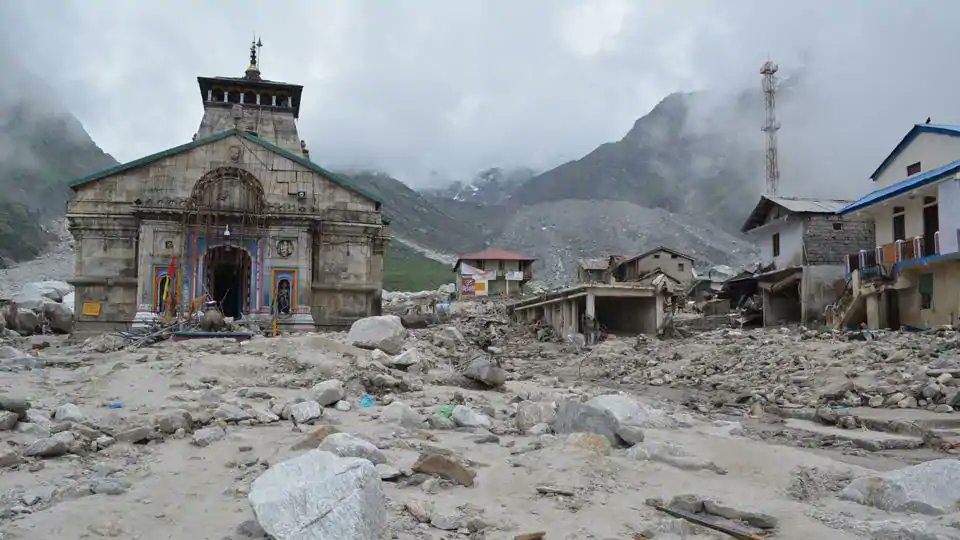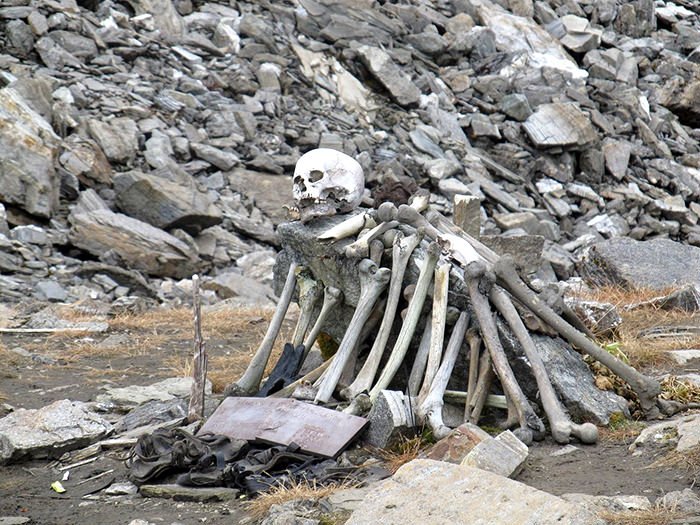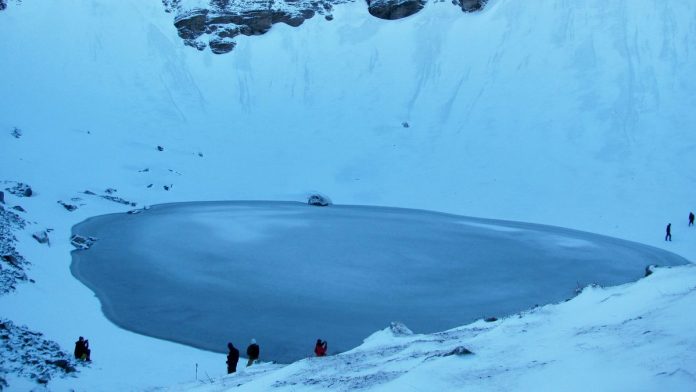Between 16 and 18 June 2013 catastrophic flooding hit the Himalayan state of Uttarakhand in north India.
It devastated the upper reaches of the state, causing unprecedented death and destruction.
The area is home to some of India's holiest places.
Since it was summer, and monsoon was still a month away, “Chhota Chardham Yatra” to Badrinath, Kedarnath, Gangotri and Yamunotri was in full swing.
Sikh pilgrims also thronged to Hemkunt Sahib near Badrinath.
Uttarakhand has an area of ~53000 sq km.
The heavens opened up for two days over almost half of it. Many stations recorded rainfall over 30 cm.
Assuming 20 cm (avg) rainfall over 25000 sq km, the volume was ~5 cubic km.
That is 5000 billion litres of water!
Where could all this water falling on peaks and glaciers at elevations of 7000 m or more go?
It flooded the drainage system – the streams and rivers.
Both Ganga and Yamuna systems are located here. These systems got flooded with the water.
But there was more loss in areas flanking the Ganga system since it has many more pilgrim and tourist sites.
Nevertheless the Yamuna system was also affected. Delhi, 250 km away from Paonta where Yamuna emerges from the hills, was on the verge of being flooded.
Floods in Alaknanda stranded 12000 pilgrims at Badrinath [3300 m] and 5000 at Hemkunt Sahib [4630 m].
Its confluences with Dhauli Ganga, Nandakini, Pindar and Mandakini at Vishnuprayag, Nandaprayag, Rudraprayag and Karnaprayag respectively, were also devastated.
Now Bhagirathi, the western tributary.
It originates at Gaumukh on the Gangotri Glacier in Uttarkashi district.
On way to Devprayag, Bhagirathi flows into the Tehri Dam, one of India's highest dams.
And this made a crucial difference.
At Devprayag Alakananda was discharging ~7000 cu m /s, and water level had risen 11 m overnight.
Bhagirathi also had a similar discharge.
But Tehri Dam, which was almost empty at the beginning of the monsoon, contained the Bhagirathi, letting only 500 cu m/s out.
So at Rishikesh, the Ganga was carrying mainly water from Alaknanda and its tributaries.
Even that water devastated Rishikesh and Haridwar.
Had Tehri Dam not contained the Bhagirathi flood, devastation would have been much worse.
The flood caused loss of life and property in over 4,000 Himalayan villages in Uttarakhand.
Such was its fury that bodies of those washed away in the upper reaches were recovered as far downstream as Haridwar, Moradabad and even Allahabad.
Why did this anomalously heavy rainfall occur, that too much before the normal arrival of the Monsoon in the area?
For this we need to understand Monsoon and other weather systems that affect North India.
First, the Monsoon.
Summer warms the Indian Ocean.
But its eastern part (near Australia) still keeps getting cold Arctic water via the Pacific. The western part (near Africa/India) does not.
The resulting temperature difference between W and E waters is called “Indian Ocean Dipole”.
Warm air in the west rises up. It leaves low pressure on the surface.
Eastern waters are colder, and the pressure is higher there.
This east-west pressure difference drives moisture-laden winds from off-Australia towards Africa and India.
This is the Monsoon.
By end-May these winds reach India's southern tip.
India's landmass splits them into an “Arabian Sea Arm” and a “Bay of Bengal Arm”.
A low pressure line - the “Monsoon Trough” - joins the two arms.
The Trough gradually advances northward till it covers entire India by middle of July.
Winds behind the Trough are from sea to land.
So western & peninsular India sometimes gets westerlies from Arabian Sea and sometimes easterlies from the Bay.
Eastern and northern parts get mostly easterlies from the Bay (the “Purvai” - पुरवाई - of folk songs in Bihar and UP).
Now the other phenomenon that affects weather in north India - “Western Disturbance”.
Western Disturbances (WD) are low pressure areas which start over Mediterranean Sea, Caspian Sea, or even North Atlantic, usually in the winter, and move east towards the Himalayas, riding the Jet Stream in earth's atmosphere.
They bring rain in areas from Iraq to Pakistan.
As they hit the Himalayas, around Punjab they get inhibited and cause rains in northwest India.
Most of the winter rains necessary for the Rabi crop in north India is due to Western Disturbances
As a WD slows down in Punjab, it gets trapped by Himalayas on its north. Low pressure inside it often draws air from the south (Rajasthan), inducing a circulation which sometimes extends all the way south to the Arabian Sea.
Now let us see why heavy rain occurred over western and central Uttarakhand between 16-18 June 2013.
Monsoon hit Kerala on its normal date of 1st June that year.
On 12th June however a low pressure area formed in the Bay, off the Odisha coast.
The trapped moisture rose up, condensed and precipitated over west-central Uttarakhand.
Carried by the now sluggish WD the converged system moved east very slowly.
As a result heavy precipitation continued for a full two days, causing the floods.
The floods were devastating.
But the situation could have been much worse had Tehri dam not been there.
The discharge into the Ganga at Devprayag would then have doubled because of the Bhagirathi flood.
Lower Uttarakhand and UP would have been devastated.
Dams are justifiably criticised for ecological, seismological and human reasons.
But during those two days it was Tehri Dam which saved the plains of Western UP from even more unimaginable disaster.
--- ENDS ---















